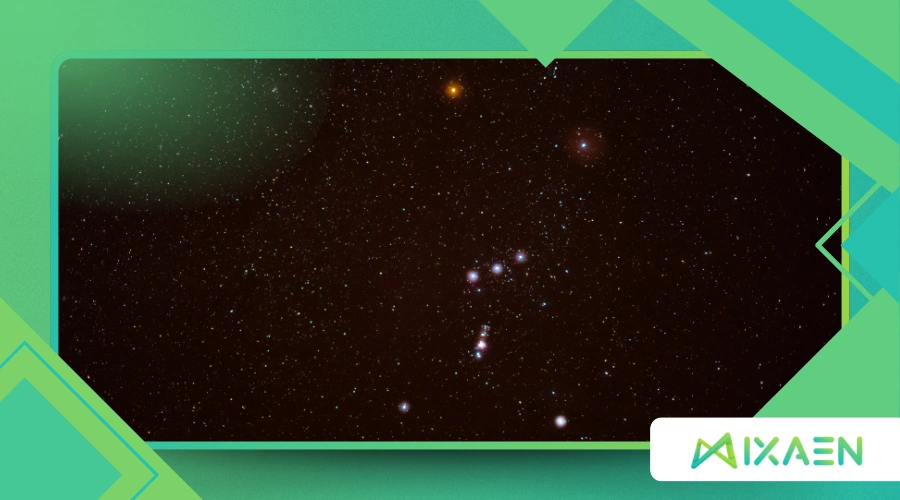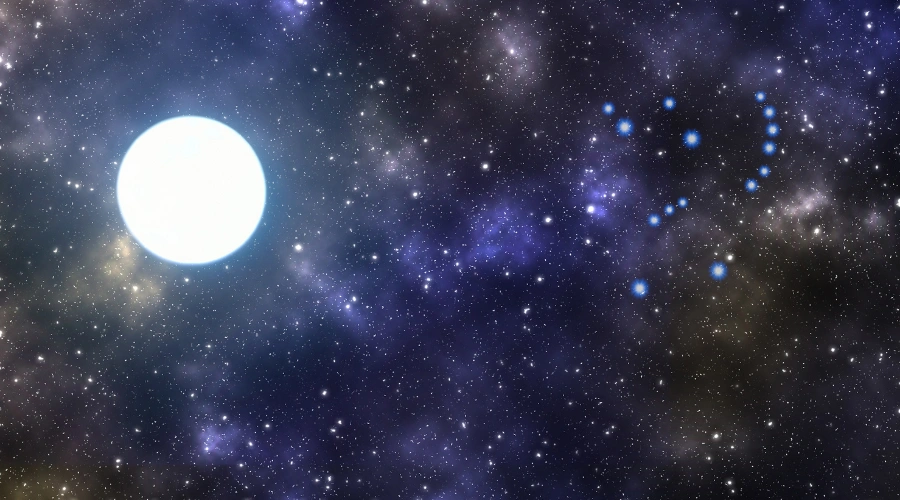How to Find and Identify Orion’s Belt in the Night Sky

Orion’s Belt is one of the most recognizable celestial landmarks, a trio of stars that has guided explorers, storytellers, and stargazers for millennia.
Anúncios
Whether you’re an amateur astronomer or simply love gazing at the cosmos, locating this iconic asterism is a rewarding experience.
But how do you spot it among the countless stars?
Let’s unravel the secrets of finding and identifying Orion’s Belt with precision.
The journey of discovering Orion’s Belt often ignites a passion for astronomy in many individuals.
From novices to seasoned stargazers, the excitement of pinpointing this constellation can lead to a deeper appreciation for the night sky.
As you learn about the stars, you may find yourself drawn to explore other constellations and celestial phenomena, expanding your knowledge and enjoyment of astronomy.
Why Orion’s Belt Captivates Skywatchers
Unlike fleeting meteors or distant planets, the three aligned stars of Orion’s Belt—Alnitak, Alnilam, and Mintaka—shine brightly even in light-polluted skies.
Ancient cultures from the Egyptians to the Maya wove myths around them, while modern astronomers use them as a celestial roadmap.
A 2021 study by the International Dark-Sky Association found that 80% of urban stargazers could identify Orion’s Belt, proving its universal appeal.
This widespread recognition is not just due to its visibility; the stars have also been linked to various cultural stories and traditions throughout history.
For instance, in ancient Egypt, the pyramids were aligned with Orion’s Belt, demonstrating its significance in their cosmology.
Similarly, many indigenous cultures have their own tales about these stars, showcasing the rich tapestry of human connection to the cosmos.
Step 1: Know When and Where to Look
Timing is everything.
Orion dominates the winter sky in the Northern Hemisphere (November to February) and the summer sky in the Southern Hemisphere.
The constellation rises in the east and sets in the west, with Orion’s Belt sitting at its center.
For the best view, aim for a moonless night between 9 PM and midnight.
Understanding the seasonal changes in the night sky can greatly enhance your stargazing experience.
In addition, familiarizing yourself with local weather patterns can help you choose the best nights for observation.
Joining local astronomy clubs or following online astronomy forums can provide valuable insights on optimal viewing times and conditions.

Best Viewing Months for Orion’s Belt
| Hemisphere | Optimal Viewing Period |
|---|---|
| Northern | December – February |
| Southern | June – August |
+ Aurora Borealis: How Solar Winds Create Lights in the Night Sky
Step 2: Locate Orion the Hunter
Before pinpointing the Belt, find Orion himself.
Look for four bright stars forming a rough rectangle—Betelgeuse (a red supergiant) marks his shoulder, while Rigel (a blue supergiant) shines at his foot.
Between them, the three stars of Orion’s Belt stand out like a cosmic waistline.
Recognizing Orion the Hunter provides context to the stars you’re observing, enriching your understanding of the constellation.
Each star in Orion has its own unique characteristics and stories, adding depth to your stargazing experience.
By learning about these stars, you can appreciate the intricate dance of celestial bodies that populate our night sky.
Step 3: Confirm the Three Stars
Not every trio is Orion’s Belt.
Here’s how to verify:
- Alignment: The stars form a near-perfect straight line.
- Brightness: Alnilam, the middle star, is the brightest.
- Surroundings: Below the Belt lies Orion’s Sword, home to the stunning Orion Nebula.
Understanding these characteristics can help differentiate Orion’s Belt from other star formations.
Moreover, knowing the relative brightness of the stars can enhance your observational skills and help you identify other celestial objects in the sky.
As you become more skilled at recognizing constellations, you may find yourself drawn to advanced astronomical studies or even astrophotography.
++ The Largest Star in the Universe: Everything About UY Scuti and Its Secrets
Key Stars in Orion’s Belt
| Star Name | Magnitude | Distance (Light-Years) |
|---|---|---|
| Alnitak | 1.74 | 1,260 |
| Alnilam | 1.69 | 2,000 |
| Mintaka | 2.23 | 1,200 |
Step 4: Use the Belt as a Celestial Guide
Once you’ve found it, Orion’s Belt becomes a stellar compass:
- To Sirius: Follow the line downward to the brightest star in the night sky.
- To Taurus: Trace upward to Aldebaran and the Pleiades.
- To the Nebulae: The Belt points to both the Orion and Horsehead Nebulae.
Using Orion’s Belt as a guide can open up a treasure trove of celestial wonders.
Each direction leads to unique star clusters and nebulae, making your stargazing session richer and more fulfilling.
Exploring these neighboring celestial bodies can deepen your appreciation for the vastness of the universe and the beauty within it.

Myths and Science Behind Orion’s Belt
The stars aren’t just navigation aids—they’re cosmic laboratories.
Alnilam, for instance, is a blue supergiant 375,000 times brighter than the Sun.
Meanwhile, Mintaka is a multiple-star system.
Ancient Greeks saw a hunter’s belt, while the Navajo viewed it as a celestial pathway.
These interpretations showcase the diverse ways cultures have connected with the stars, weaving narratives that bridge science and mythology.
Moreover, modern astronomers continue to study these stars, unraveling their mysteries and contributing to our understanding of stellar evolution.
For instance, research into the life cycle of supergiants like Alnilam can provide insights into the future of our own Sun.
Common Mistakes When Identifying Orion’s Belt
- Confusing it with Cassiopeia’s “W”: Orientation differs.
- Misjudging star spacing: The Belt’s stars are evenly spaced.
- Ignoring the Sword: The nearby Orion Nebula confirms you’re in the right place.
Being aware of these common mistakes can enhance your confidence as you explore the night sky.
Many beginners may feel overwhelmed by the vastness of space, but understanding these nuances can simplify the experience.
As you practice, you’ll become more adept at recognizing constellations and celestial patterns, making stargazing a more enjoyable activity.
For more information on stargazing and celestial events, check out NASA’s Night Sky Network.
Enhancing Your Observation
- Binoculars: Reveal the Orion Nebula’s glow.
- Star Apps: Use SkyView or Stellarium for real-time tracking.
- Dark Sky Locations: National parks offer pristine views.
Enhancing your observation techniques can significantly improve your overall stargazing experience.
Investing in quality binoculars or a telescope can open up new worlds, allowing you to see details that are invisible to the naked eye.
Additionally, participating in local astronomy events or workshops can provide valuable tips and foster connections with fellow enthusiasts.
Conclusion: A Gateway to the Cosmos
Finding Orion’s Belt is more than a stargazing milestone—it’s an invitation to explore deeper wonders.
From nebulas to neighboring constellations, this celestial trio bridges myth and science, proving the night sky is always worth looking up for.
Now, step outside, look east, and let the stars guide you.
As you continue your journey in astronomy, remember that every star has a story, and every constellation holds a universe of secrets waiting to be discovered.
Engaging with the night sky can lead to a lifelong passion for exploration and learning.
